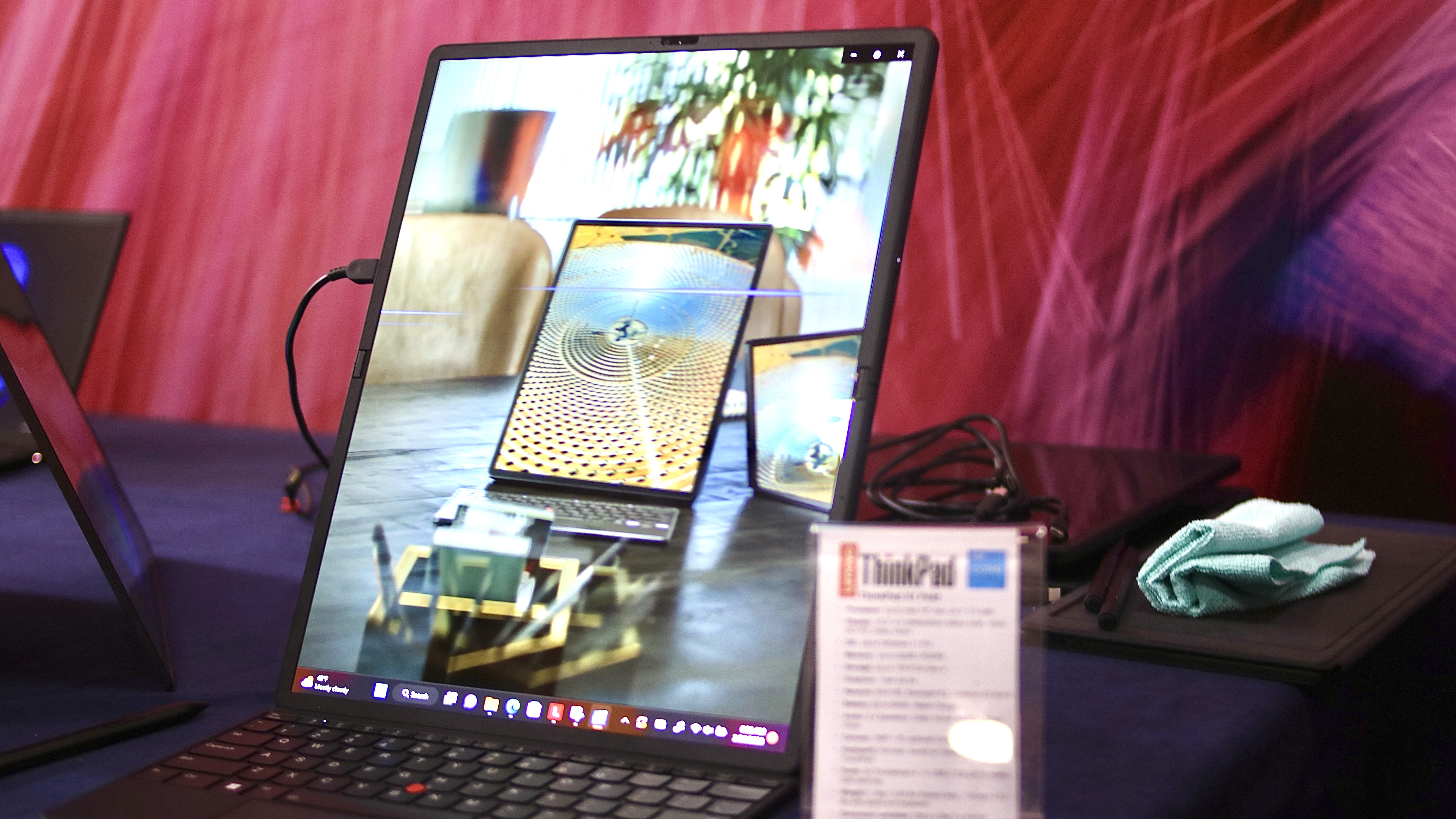A laptop with a rollable display – who is this for, exactly?
Lenovo turned heads at MWC with a shiny proof of concept, but all it did was steal away the limelight from some great business launches


Technology built with sustainable materials. Hardware with a clear appeal to businesses. A laptop with a screen that rolls upward like an inverted garage door? One of these feels out of place but somehow too flashy to ignore. This device in question was a spectacular proof of concept for a Lenovo ThinkBook with an extendable OLED display – winner of one of the ‘Gadget Watch’ awards the GSMA likes to give out at Mobile World Congress (MWC).
I, the reviews editor of IT Pro, had come to Barcelona to see the technology businesses needed to know about – the stuff that turns the head of an IT decision-maker. But, once again, the never-ending expansion of screen space has stolen the limelight. Foldable phones, foldable PCs and rollable displays are taking over, but who are these devices actually for?
Lenovo had around 15 new devices on show at a private hands-on session, including various sizes of ThinkBook, ThinkPad and IdeaPad, plus a monitor. Much of this was good; there was a very attractive-looking IdeaPad Slim3 Chromebook coming in at less than £400, with notable improvements to its storage, processing power and webcam coupled with a 13hrs 30mins battery life. We also previewed the IdeaPadDuet 3i 2-in-1, with a sturdier stand and a faster Intel N200 CPU. All very businessy and essential.
Sustainability is also high on Lenovo's agenda (as it should be) with a wonderfully innovative way of packaging its products using bamboo sugar cane. This is fully biodegradable and you can even leave it on a compost heap, one representative said.

This was in addition to the ThinkBook Z13 with a special flax seed cover; specifically the stringy bits from the flax seed mixed with a resin to create a recyclable laptop lid. It's a noble idea, but also something I'd forget as soon as I left Barcelona. In fact, I forgot it instantly the moment another Lenovo representative rolled out a fancy ‘proof of concept’ out of nowhere.
“Oooooh,” all the journalists said in unison, watching the screen slowly expand from 12.7in to 15.3in. Lenovo calls it a rollable display, although the screen slides down into the chassis, sitting underneath the keyboard. I very much doubt it’s ‘rolled up’, like a carpet, as the name sort of suggests, but it is a very impressive piece of engineering. At full height, though, it just looks like a laptop in a magic mirror.
There’s still more work to do here as the Lenovo technicians want it to be as durable as possible. That means the hinges and motors are going to be tweaked until it rolls up and down without a hitch. Then there will be marketing considerations, like pricing and region availability. There may also be maintenance and repair schemes to work out. It is unlikely you’ll be seeing this in the wild anytime soon.
Sign up today and you will receive a free copy of our Future Focus 2025 report - the leading guidance on AI, cybersecurity and other IT challenges as per 700+ senior executives
Regardless, I had a hard time working out who this was for exactly. Lenovo suggests it's a device for creatives and those that want a tall display so that they can stack applications or windows on top of one another. Indeed. people who ‘create’ want portrait mode, apparently.

RELATED RESOURCE

Ignite your innovation engine
Technologies and solutions that help you innovate, adapt, and grow
In that moment, watching the screen grow and listening to the term ‘creatives’ used very vaguely, it felt very much like some kind of future gadgetry for the kids on TikTok. Are all these expandable display laptops for illustrators and the Photoshop-savvy? Do we only want to appease the graphic designers?
I can’t help but feel manufacturers put way too much attention into the display, at the expense of improving areas that could actually help the average user. Give me longer battery life, higher storage, and snappier data transfers. I’m all for trying out new innovative keys, or even more backups and fail-safes. To illustrate my point perfectly, my less-than-two-year-old M1 MacBook Pro broke down two days before I left for Barcelona. Both its USB-C ports could no longer take charge or connect to a monitor. Built-in wireless charging for laptops could be the new capability hybrid workers need – I know I want it.
The technology industry is walking a pretty fine line between its responsibilities to the planet and its relentless cycle of new products. This fascination with expanding screens is part of the problem, and is overshadowing the useful improvements we should be seeing.
Bobby Hellard is ITPro's Reviews Editor and has worked on CloudPro and ChannelPro since 2018. In his time at ITPro, Bobby has covered stories for all the major technology companies, such as Apple, Microsoft, Amazon and Facebook, and regularly attends industry-leading events such as AWS Re:Invent and Google Cloud Next.
Bobby mainly covers hardware reviews, but you will also recognize him as the face of many of our video reviews of laptops and smartphones.


